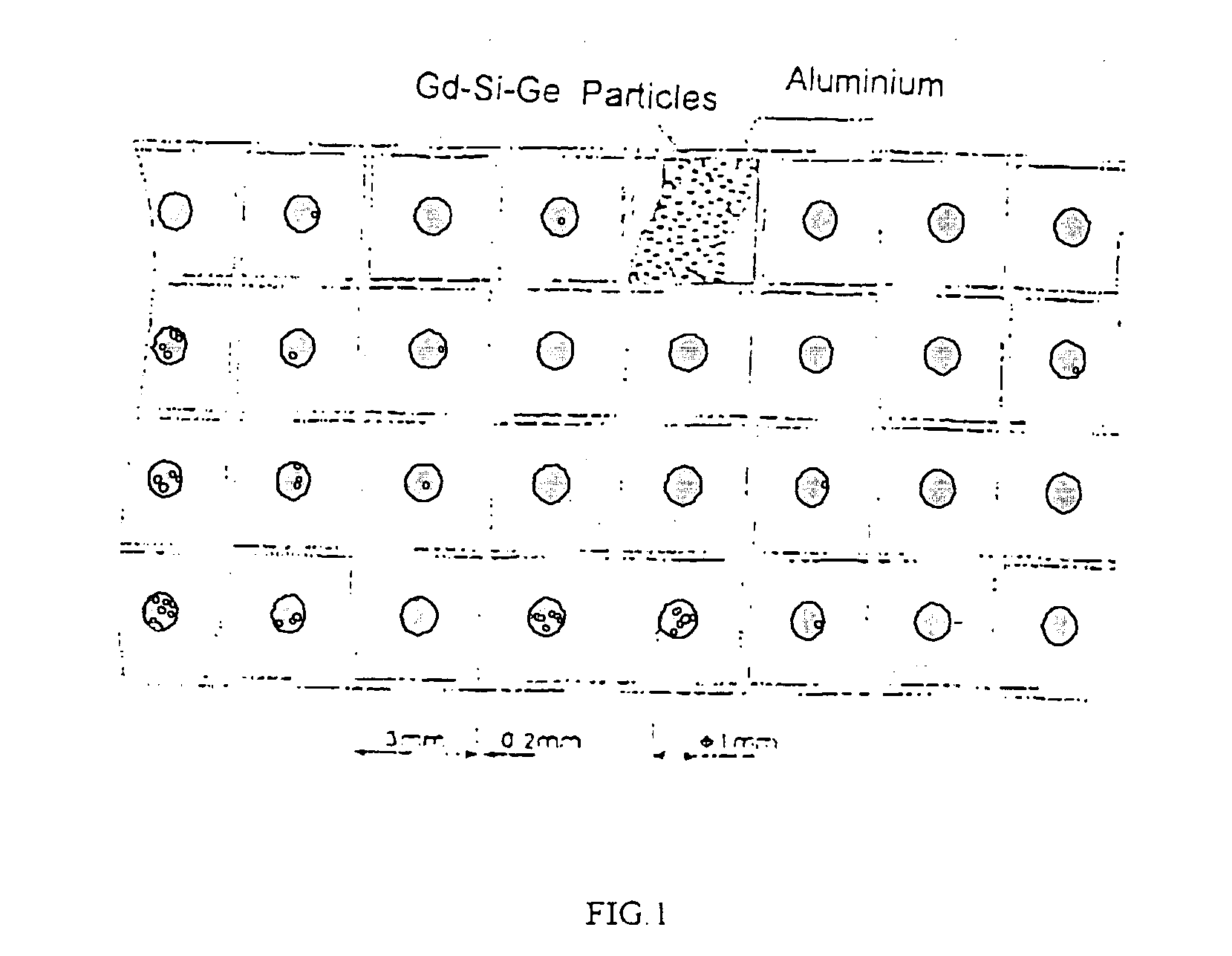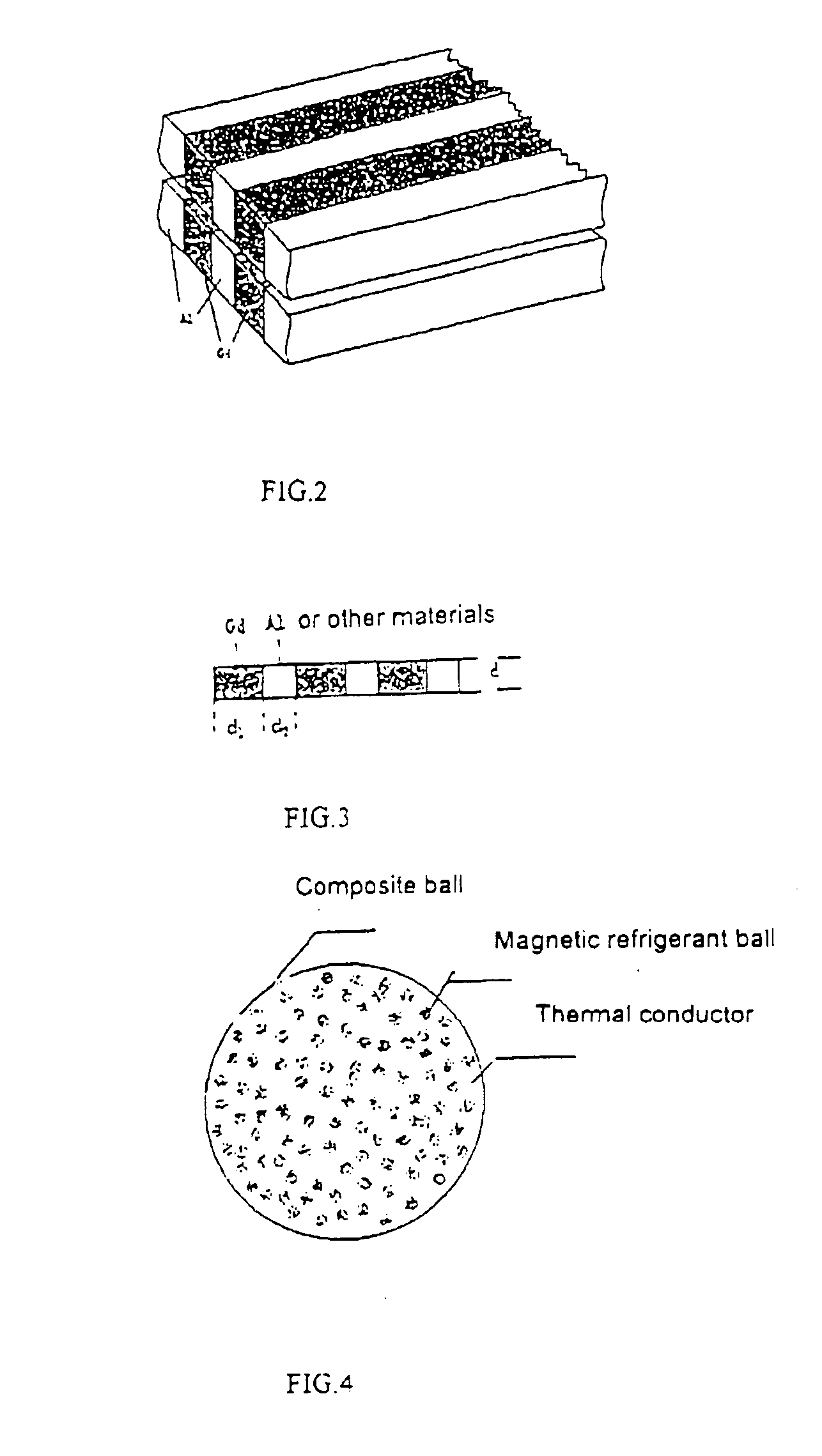Moulding process of composite material including high-thermal & shy; conductor and room-temperature magnetic refrigerant
a composite material and high-thermal technology, applied in the direction of soldering apparatus, manufacturing tools, transportation and packaging, etc., can solve the problems of affecting the energy consumption and environment directly, unable to carry out room-temperature magnetic refrigeration, and unable to meet the requirements of high-temperature magnetic refrigeration
- Summary
- Abstract
- Description
- Claims
- Application Information
AI Technical Summary
Benefits of technology
Problems solved by technology
Method used
Image
Examples
example 1
[0041] The room temperature magnetic refrigerant is made by stacking the sheet units of the material which is 0.1 mm thick. The thickness of the stacked units is 5 mm. A truncated cone of 1 mm diameter and 0.05 mm height is inserted between the two sheet units at a 5 mm interval and the fluid path is so obtained. The sheet unit is comprised of two copper sheets of 0.01 mm thickness. A liquid oxidation resistant thermal conductive agent gallium is suffused therebetween. The liquid gallium stated above is dopped with room temperature magnetic refrigerant material gadolinium to form room temperature magnetic refrigerant. The diameter of the refrigerant is 0.005 mm. Impressions are made about every 3 mm between the two copper sheets to form the small isolated areas. The process is described in detail as below: [0042] 1. Machine the room temperature magnetic refrigerant material gadolinium into sheets; or crush with water, ball grind, plasma spray coat or machine the room temperature mag...
example 2
[0047] The structure and process of making the room temperature magnetic refrigerant is basically the same as described in Example 1, except that the room temperature magnetic refrigerant material used is a super-paramagnetic material with particle size of 0.001 mm; the thickness of the sheet units is 0.05 mm; the spherical metal powders, 0.05 mm in diameter, are dispersed between the sheet units and the thickness of the stacked sheet units is 90 mm.
example 3
[0048] The room temperature magnetic refrigerant material is gadolinium and the thermal conductive metal is aluminum. [0049] 1. Mechanically crush the gadolinium to balls with appropriate size of 0.025 mm in diameter. [0050] 2. Melt the aluminum at 940 K under argon, and then place the gadolinium balls obtained from step 1 into the molten aluminum. [0051] 3. Compress the aluminum and the gadolinium balls at 940 K and then cool it down. [0052] 4. Machine or otherwise process the material obtained from step 3 to small balls with 0.25 mm in diameter. It is shown in FIG. 4.
PUM
| Property | Measurement | Unit |
|---|---|---|
| size | aaaaa | aaaaa |
| diameters | aaaaa | aaaaa |
| particles size | aaaaa | aaaaa |
Abstract
Description
Claims
Application Information
 Login to View More
Login to View More - R&D
- Intellectual Property
- Life Sciences
- Materials
- Tech Scout
- Unparalleled Data Quality
- Higher Quality Content
- 60% Fewer Hallucinations
Browse by: Latest US Patents, China's latest patents, Technical Efficacy Thesaurus, Application Domain, Technology Topic, Popular Technical Reports.
© 2025 PatSnap. All rights reserved.Legal|Privacy policy|Modern Slavery Act Transparency Statement|Sitemap|About US| Contact US: help@patsnap.com



